Complete Solutions to Problem For Practice of chapter HALOALKANES AND HALOARENES of Class 12 book with complete answers and questions
| Class 12 | CHEMISTRY |
| Chapter | HALOALKANES AND HALOARENES |
| OP TANDON | Problem For Practice |
| Number Of Questions | 19 |
| Academic Year | 2023-24 |
(A) What is the final product in each reaction?
`(i) C_(2)H_(5)OH overset(I_(2))underset(NaOH)(to)`
`(ii) CHCI_(3) overset(Ag)underset("Heat")(to)`?
`(iii) CHCI_(3) overset(HNO_(3))(to)?`
`(iv) CCI_(4) overset(Fe//H_(2)O)(to)?`
`(v) C_(6)H_(5)NH_(2) overset(CHCI_(3))underset(KOH)(to)?`
`(vi) C_(4)H_(9)Br overset(NaNO_(2)//C_(2)H_(5)OH)(to)?`

`(ix) CH_(3)Li overset(CH_(2)=CH_(2))(to)?`
`(x) (CH_(3))_(3) C CI overset((CH_(3))_(2)Zn)(to)?`
`(x i) H_(2)C=overset(CH_(3))overset(|)C-CH_(2)CH_(3)overset(IBr)(to)?`
`(x i i) CH_(3)-CH-CH_(2) overset(NBS)(to)?`
`(x iii) CH_(3)-underset(CH_(3))underset(|)CH-CH_(2)CIoverset(NaI)underset("Acetone",Delta)(to)?`
`(x iv) R_(3)Mg X overset((CH_(3))_(2)CO //H_(2)O)(to)?`
`(xv) CH_(3)-underset(Br)underset(|)CH-underset(CH_(3))underset(|)CH-CH_(3)+HBr to ?`
`(xvi) CH_(3)-underset(CH_(3))underset(|)CH-underset(OH)underset(|)CH-CH_(3)+HBr to?`
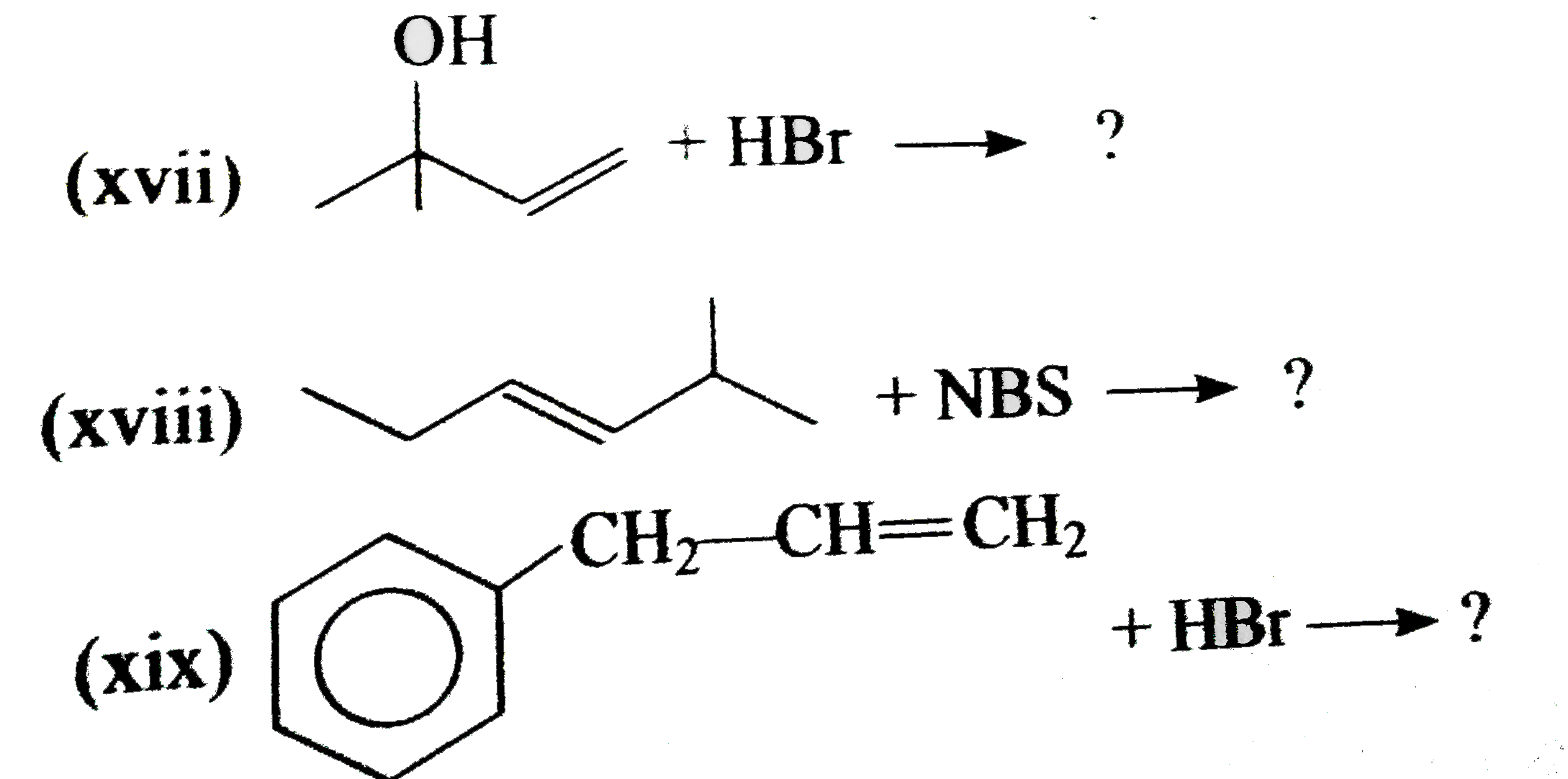
`(x x) CH_(3)-overset(CH_(3))overset(|)underset(CH_(3))underset(|)C-underset(CI)underset(|)CH-CH_(3)+KOH(alc) to?`
`(x x i) (CH_(3))_(3)C-CH_(2)Br+KOH (alc) to ?`
`(x x ii) CH_(3)-overset(CH_(3))overset(|)underset(CH_(3))underset(|)C-CH_(2)Br+C_(2)H_(5)OH overset("Heat")(to)?`

`(B) (i) C_(6)H_(5)CH_(2)CH_(3) overset(Br^(2))underset(hv)(to)?`
`(ii) C_(6)H_(5)CH_(2)CH_(3) overset((i) Br_(2),"heat ,light")underset((ii) NaCN,H_(2)O //H)(to)?`
`(iii) CICH_(2)CH_(2)CH_(2)COPh overset(KOH)underset(MeOH)(to)?`
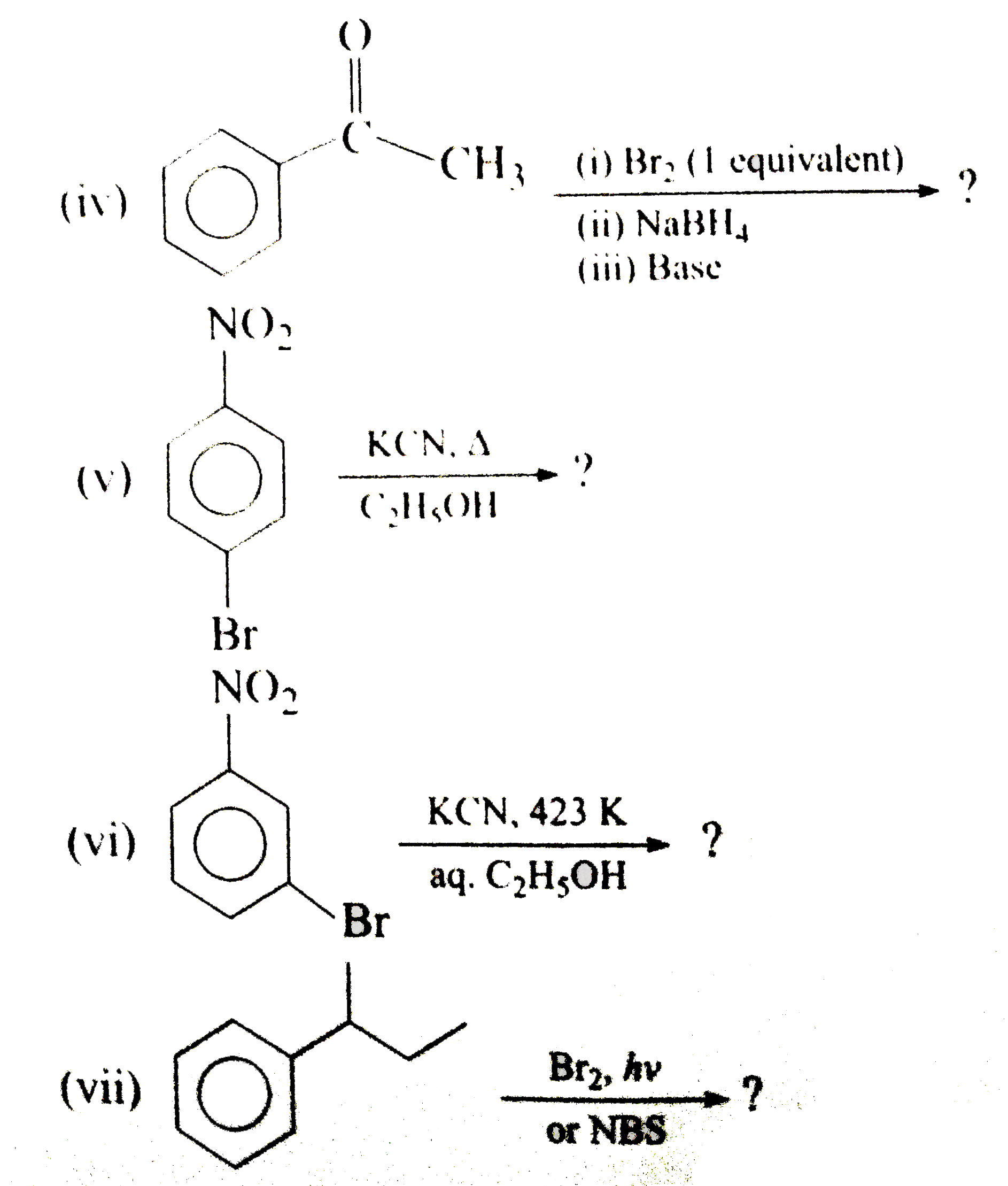
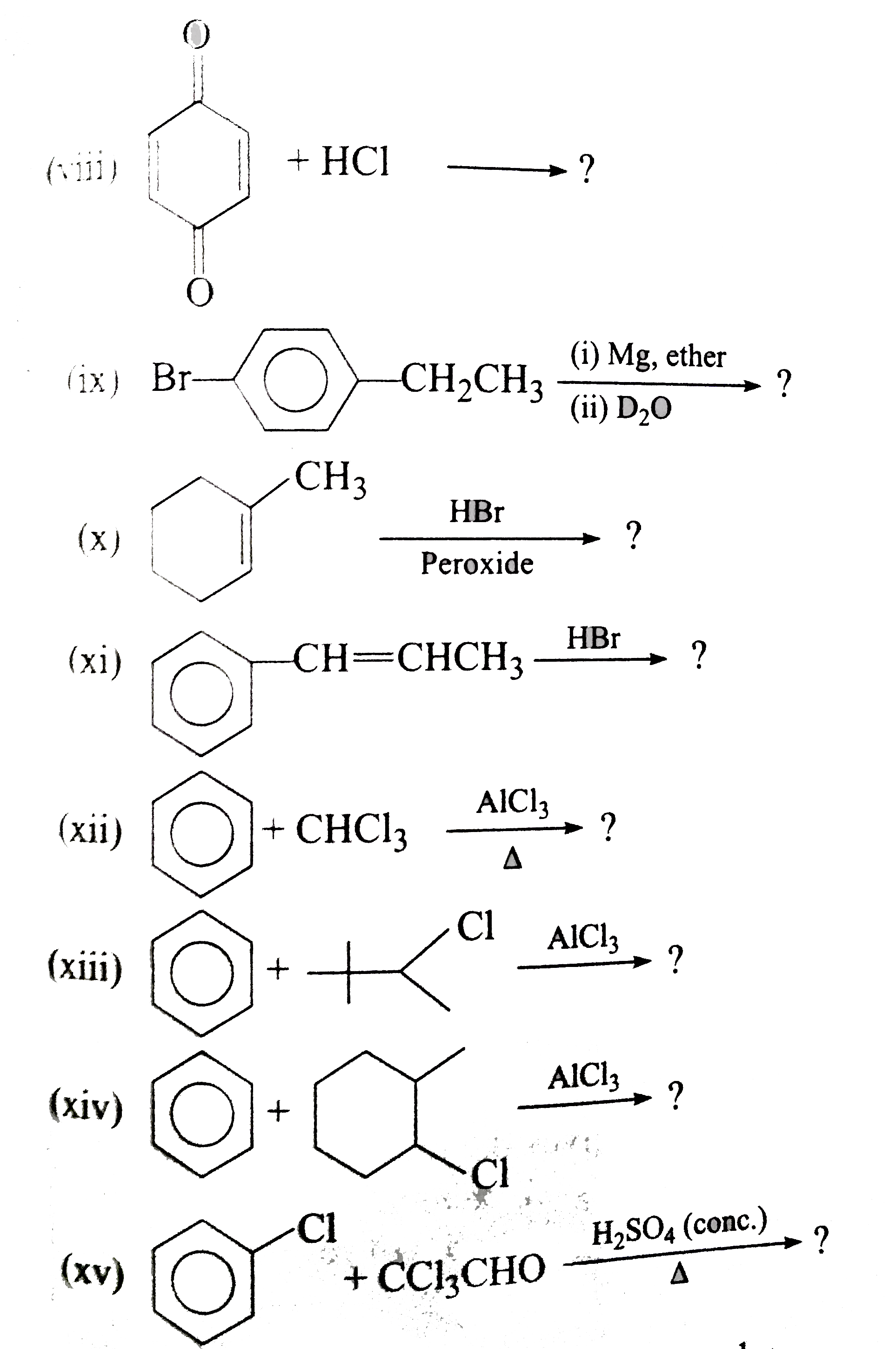 View Solution
View SolutionWhat happens when ? Give equations only:
(i) chlorine reacts with `CS_(2)` in pressure of anhydrous aluminium chloride .
(ii) Chloride is heated with alcoholic KOH and aniline.
(iii) Ethyl alcohol is heated with ionic and sodium hydroxide.
(iv) Ethyl alcohol reacts with bleaching powder.
(v) Chloride is passed through ethyl alcohol.
(vi) Ethyl bromide reacts with sodium ethoxide.
(vii) Ethyl bromide reacts with silver cyanide.
(viii) Chloral is treated with aqueous sodium hydroxide.
(ix) Carbon tetrachloride is treated with hydrogen fluoride in pressure of antimony fluoride.
(x) Ethyl amine is heated with chloroform and alcoholic KOH.
(xi) Chloroform is boiled with aqueous potassium hydroxide.
(xii) Ethyl bromide is treated with alcoholic caustic soda.
(xiii) Ethyl bromine is heated with zinc.
(xiv) Methyl magnesium bromide is treated with formaldehyde followed by hydrolysis.
(xv) 2-Bromopentane is heated with alcoholic KOH.
(xvi) 2-Chloro-2- methylpropane is treated with potassium tert-butoxide in dimethyl sulphoxide.
(xvii) tertiary Butyl chloride reacts with ethylene in presence of `AICI_(3)`
(xviii) Benzene reacts with n-propyl chloride in pressure of anhydrous `AICI_(3)`View SolutionHow will you synthesise ?
(a) Isopropyl bromide from n-propyl bromide.
(b) n-propyl bromide from isopropyl bromide.
(C) Propionic acid from ethyl bromide.
(d) 1- Bromopropane from 1-chloropropane.
(e) Ethylene glycol from ethyl chloride.
(f) Chloroform from ethyl alcohol.
(g) Iodoform from acetylene.
(h) vinyl bromide from ethyl alcohol.
(i) Allyl chloride from propane.
(j) Methyl iodide from methane.
(k) o- Bromobenzoic acid from toluene.
(I) o-Chlorotoluene from toluene.View SolutionComplete the following by providing (A),(B),(C) and (D) :
`(i) CH_(3)CH_(2)CH_(2) OH overset(PBr)(to) (A) overset(alc.KOH)underset(Delta)(to)`
`(B) overset(HBr)(to)(C) overset(NH_(3))(to) (D)`
`(ii) CH_(3)CH_(2)CH_(2)I overset(alc.KOH)underset(Delta)(to)(A)overset(H^(+)//H_(2)O)(to)`
`(B)overset(SOCI_(2))(to)(C) overset(H)underset(LiAIH_(4))(to) (D)`
`(iii) CH_(3)CHBrCH_(3) overset(alc.KOH)underset(Delta)(to) (A) overset(HBr)underset("Peroxide")(to)`
`(B) overset(Nal)underset("Acetone")(to) (C) overset(H)underset("Ether")(to)`
`(iv) CH_(3)CH_(2)CH=CH_(2) overset(NBS)underset("Light")(to) (A) overset(alc. KOH)underset(Delta)(to)(B)`
`overset(HBr)(to)(C)`
`(v) CH_(3)CH_(2)MgBroverset(CH_(3)CHO //H_(2)O)(to) (A) overset(HBr)(to)(B)`
`overset(alc.KOH)underset(Delta)(to)(C) `
`(A) overset(NH_(3))(to) (B) overset(CHCI_(3)+KOH(alc.))(to)(C) overset(Na)underset(C_(2)H_(5)OH)(to)`
`CH_(3)-underset(CH_(3))underset(|)CH-NHCH_(3)`

`(viii) CH_(3)CH_(2)Br overset((i)(CH_(2))_(6)N_(4))underset((ii)H_(2)O //H^(+))(to) (A) overset(NaOH)(to)(B)`
`overset((i)O_(3))underset((ii)Zn//HOH)(to)(A) +(C) overset(conc.NaOH)(to)(D)`
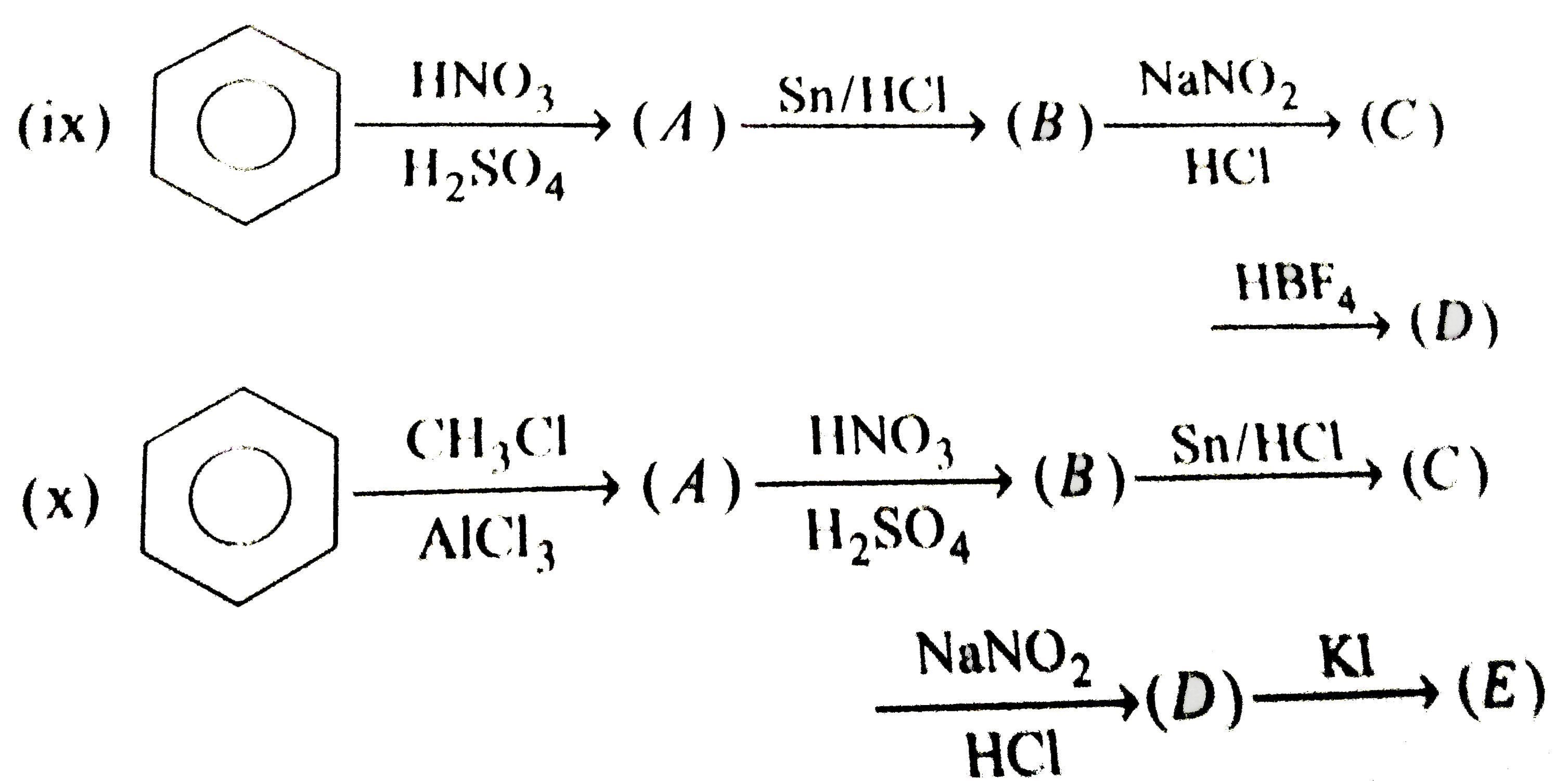 View Solution
View SolutionGive structures and IUPAC names of the products expected from reaction between 1-chlorobutane and (a) KOH (alc) (b) NaOH(aq). (c) `NH_(3) ,(d) H_(2)S,(e) C_(6)H_(t) +AICI_(3)`,
`(f)C_(2)H_(5)ONa`08:15View SolutionRank the alkyl halides in order of increasing reactivity in `E_(2)` reaction.
 View Solution
View Solution(a) Give the product of debromination with NaI in acetone solution of the following.
(i) Erythro or meso -2,3- dibromobutane
(ii) Threo or `(+-)-2,3-`dibromobutane.
(b) Write the structural formulae of the isomers of the alkyl halide , `C_(5)H_(11) Br.`
(w) Which one undergoes `E_(1)` elimination at the fastesy rate
(x) Which one can give only a single alkene on `E_(2)` elimination ?
(y) Which one gives the most complex mixture of alkenes on `E_(2)` elimination ?
(Z) Which one is incapable of reacting by the `E_(2)` elimination ?
(c) A compound is formed by substitution of two chlorine atoms for two H-atoms in propane . What is the number of structural isomers possible ?View SolutionWrite down the IUPAC names and structures of all the possible isomers having the molecular formula `C_(2)H_(4)CI_(2)` .
How are these prepared and distinguished ?View Solution(i) State which compound has a faster rate of reaction with HCI.
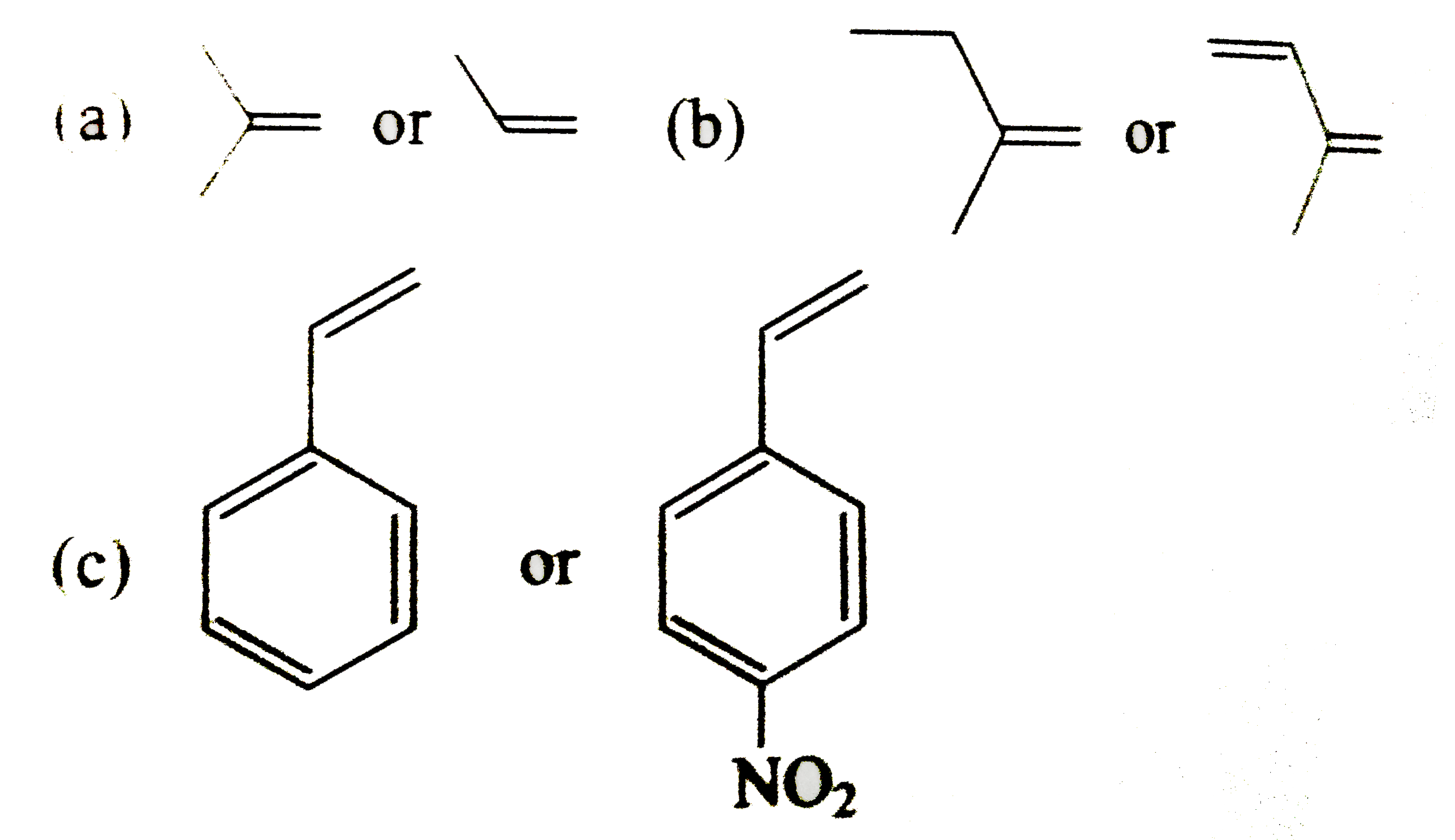
(ii) In the following pairs of halogen compounds which compound undergoes faster`S_(N^(1))` reaction ?
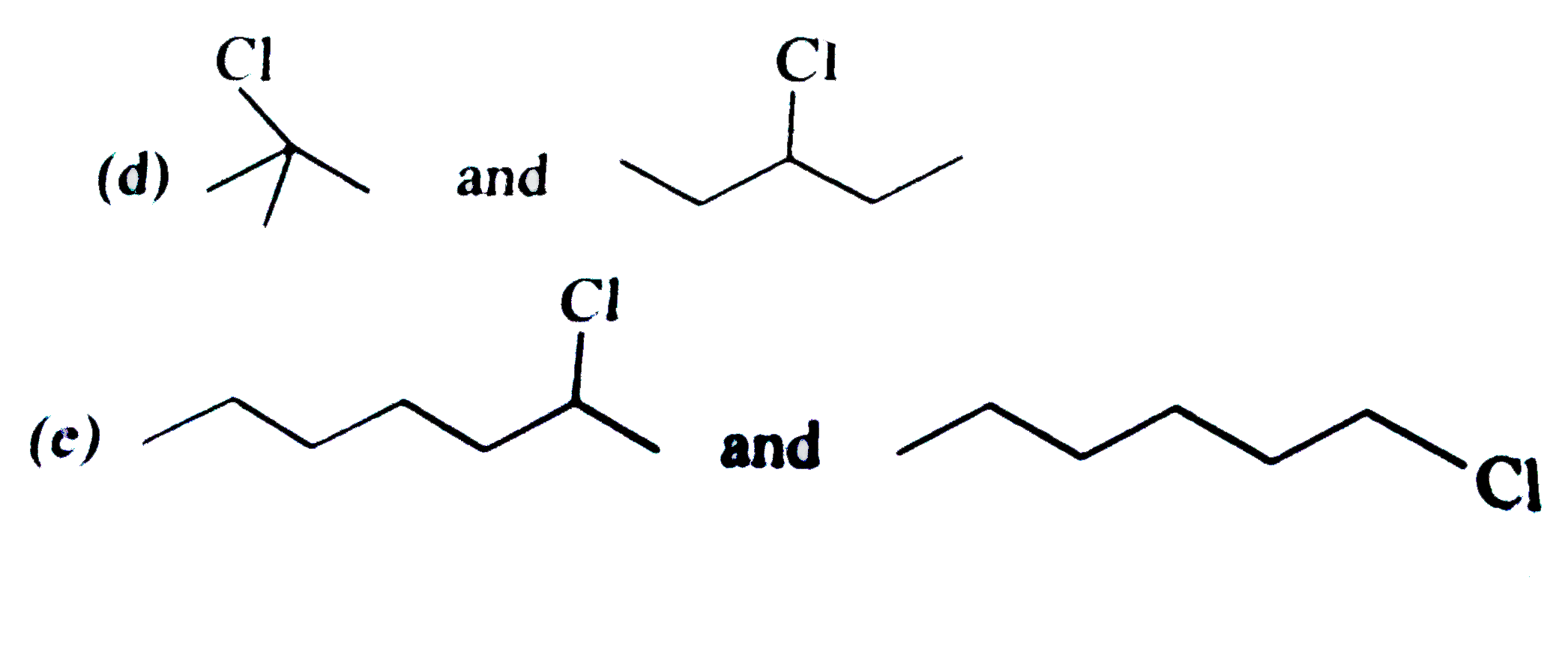
(iii) In the following pairs of halogen compounds which compound undergoes faster `S_(N^(2))` reaction with `.^(-)OH` ?
`(f) CH_(3) Br " or " CH_(3) I (g) (CH_(3))_(3) C-CI " or " CH_(3) CI`View Solution(a) Arrange alkyl halides water and alkane in order of decreasing density .
(b) Arrange chloromethanes and water in order of decreasing density.
(c) Arrange MeX in order of decreasing bond length.
(d) Arrange MeX in order of decreasing bond strength.
(e) Arrange MeX in order of activity.
(f) Arrange alkyl halides `(1^(@),2^(@),3^(@))` in order of decreasing `S_(N^(2))` reactivity.
(g) Arrange the order of reactivity of alcohols towards HX.
(h) Arrange the decreasing order of reactivity in haloforms.
(i) Arrange the following isomeric bromides in order of decreasing reactivity in `S_(N^(2))` displacement:
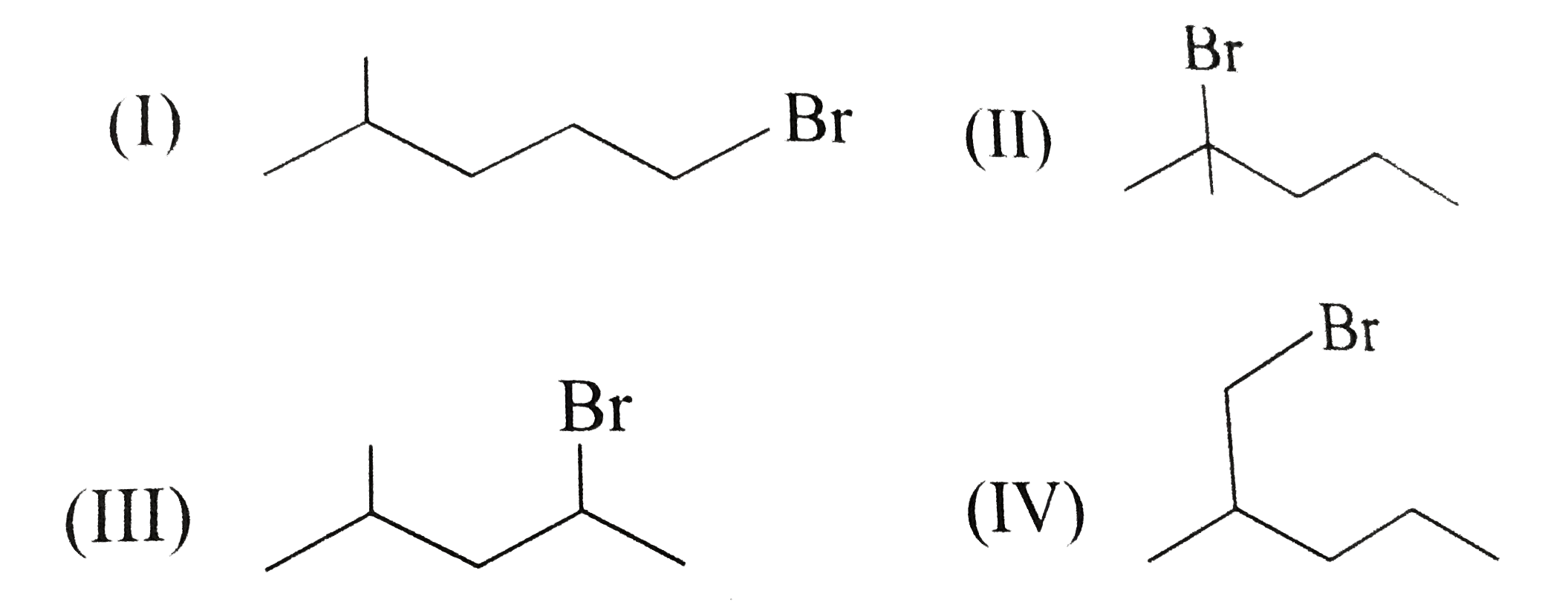
`underset((I))("(b) 2-Bromo-2- methylbutane") ,underset((II))(1-"Bromopentane")`,
`underset((III))(2-"Bromopentane")`
`(C) underset((I))(1-"Bromo-3-methylbutane") ,underset((II))(2-"Bromo-2-methylbutane")`
`underset((III))(2-"Bromo-3-methylbutane")`
`(d) underset((I))(1-"Bromobutane") , underset((II))(1-"Bromo-2- methylbutane")`
`underset(III)(1-"Bromo -3- methylbutane")`
`underset((IV))(1-"Bromo-2,2-dimethylpropane")`View SolutionExplain the following :
(a) Carbon tetrachloride is used as fire extinguisher.
(b) Use of chloroform as anaesthetic is decreasing.
(C) Chloroform is kept with a little ethyl alcohol in a dark brown coloured bottle.
(d) Iodoform gives precipitate with `AgNO_(3)` on heating while chloroform does not.
(E) Alkyl iodides become darken on standing in presence of light.
(f) A small amount of Nal or KI catalyses the hydrolysis of R-CI or the reaction,
`R-CI +R' ONa to R-O-R' + NaCI`
(g) while preparing alkyl halides from alkanes ,dry gaseous hydrohalgen acids are used instead of their aqueous solutions.
(h) Hydrogen atom of chloroform is definitely acidic in nature.
(i) Vinyl halide is less reactive while allyl halide is more reactive than alkyl halides. or
Vinyl chloride does not gives `S_(N)` reaction but allyl chloride gives.
(j) Why is free radical halogenation of alkanes is seldom used for laboratory preparation of alkyl halides ? Under what condition good yields of monosubstituted chloride can be obtained ?
(K) What effect should the following resonance of vinyl chloride have on its dipole moment?
`H_(2)C-overset(delta^(+))(CH)-overset(delta^(-))(CI) hArr H_(2)overset(delta^(-))(C)-CH=overset(delta^(+))(CI)`
(I) 2-Chloro-3-methylbutane on treatment with alcoholic potash gives2- methylbut-2-ene as the major product.
(m) Compare the rates of (i) `S_(N^(1)) " and (iii) S_(N^(2))` reactions of allyl chloride and n-propyl chloride.
(N) When `CH_(3) CH = CHCH_(2)CI` reacts with alcoholic potassium cyanide, a mixture of isomeric product is obtained.
(O) the formation of the products giving the structures of the intermediates.

(q) Arrange `C_(6)H_(5)CH_(2)CH_(2)CI, " "C_(6)H_(5)CHCICH_(3)" and "C_(6)H_(5)CH=CHCI` in the order of their decreasing activities with alcoholic silver nitrate.
(r) Arrange `CH_(3)CH_(2)Br,C_(6)H_(5) " and "C_(6)H_(5)CH_(2) Br` in order of their decreasing activities with KCN.
(s) Chlorobenzene is less reactive as compared to ethyl chloride.View SolutionThe number of isomers for the compound with moelecular formula `C_(2)BrCIFI` is
01:19View SolutionGive structures`//`configurations of the products in the following reactions :
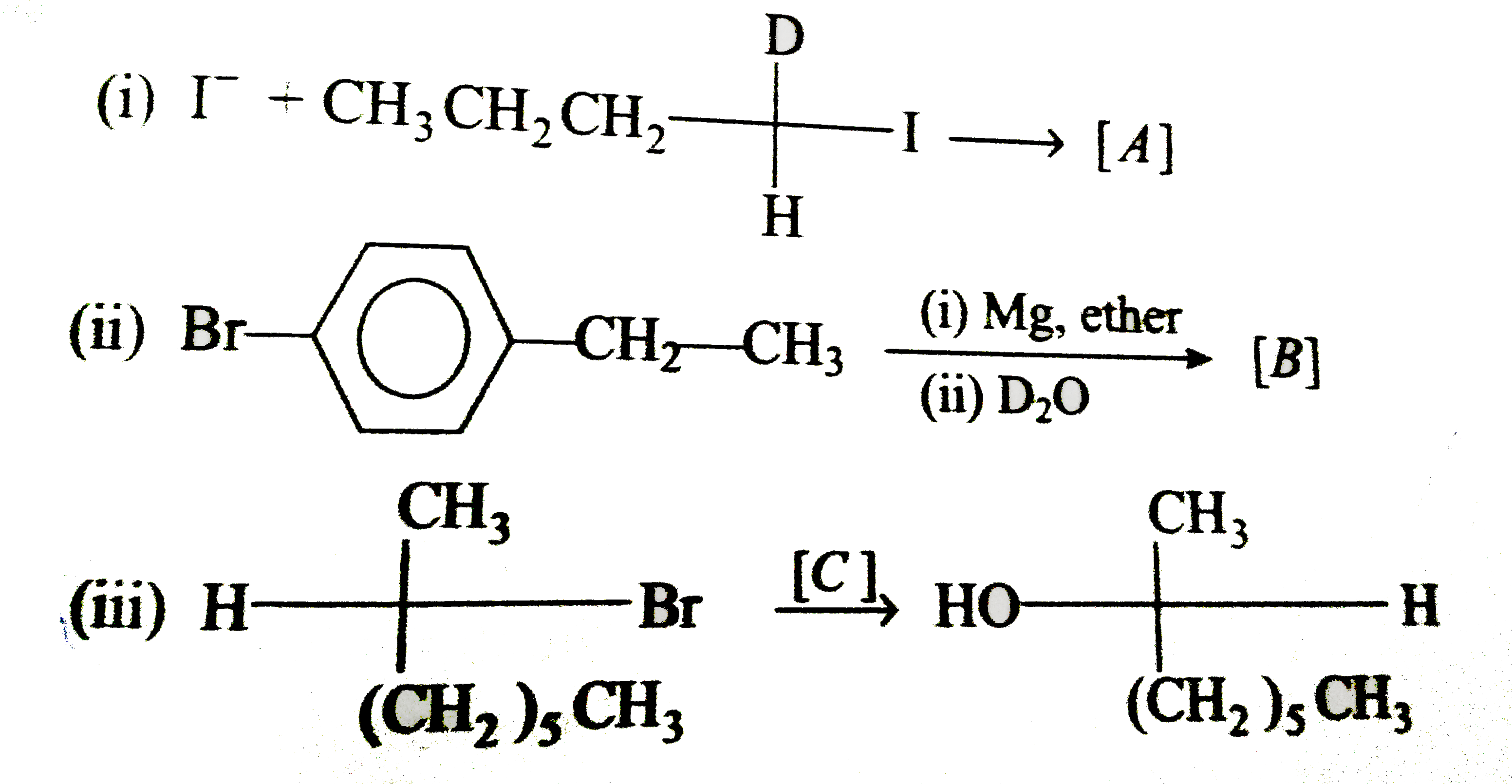 04:05View Solution
04:05View SolutionGive the major product when the following compounds are treated with sodium ethoxide.
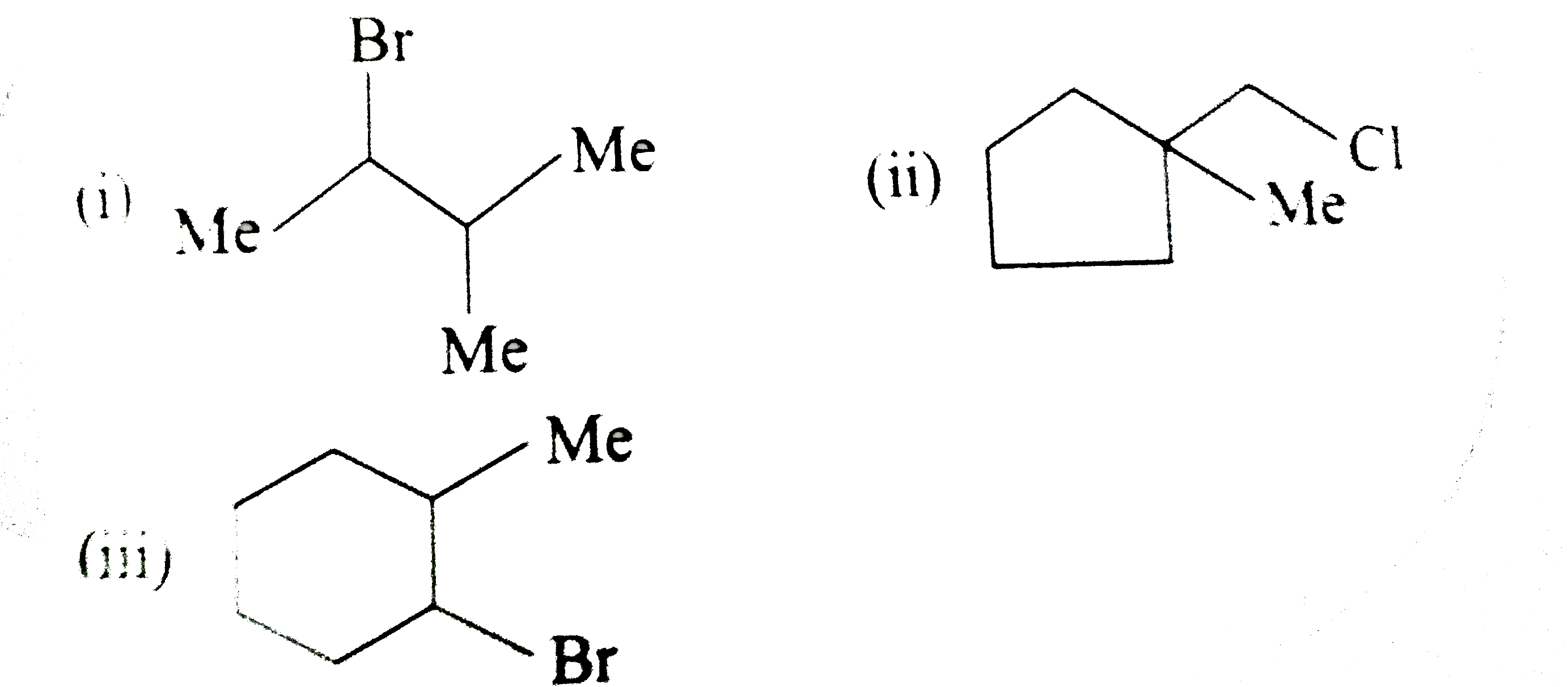 06:01View Solution
06:01View SolutionIdentify (A) to (F) and mark the `C^(***)` carbon in the entire scheme :
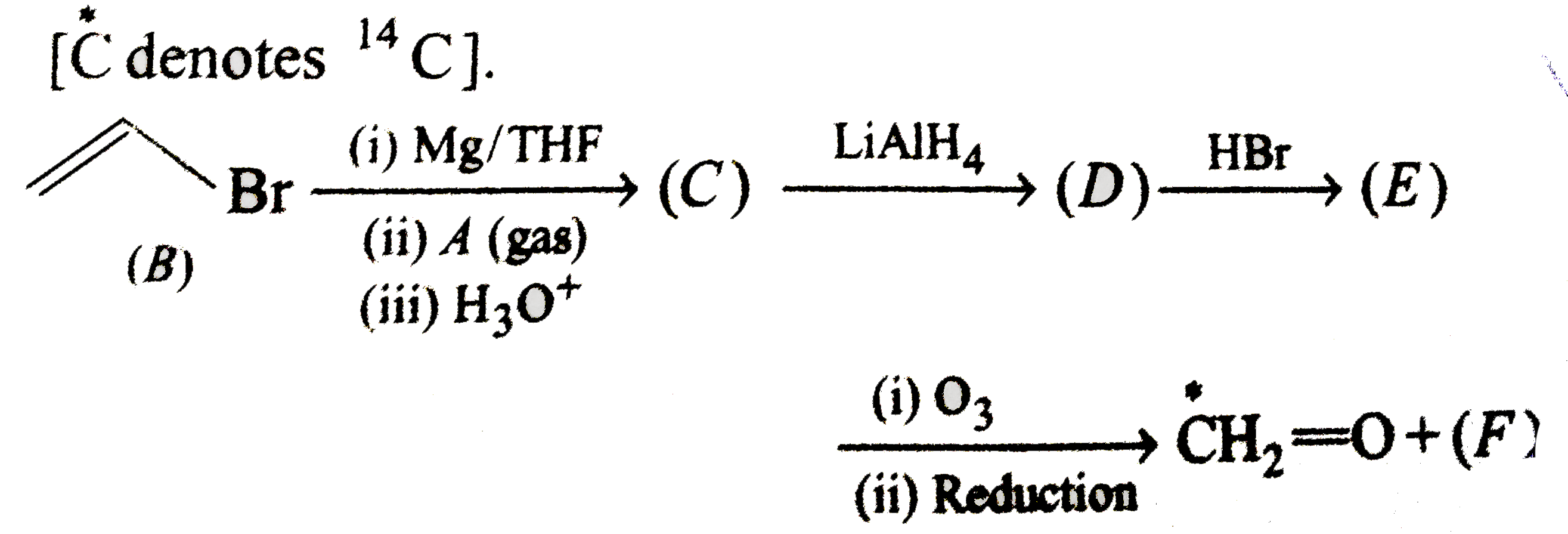 05:07View Solution
05:07View Solution(a) Give the order of rectivity towards `S_(N^(1))` solvolysis of the following :
(i) Benzyl chloride (ii) p- chlorobenzyl chloride
(iii) p- Methoxybezyl chloride (iv) p- Methylbenzyl
Chloride (v) p- Nitrobenzyl chloride.
(b) Explain :
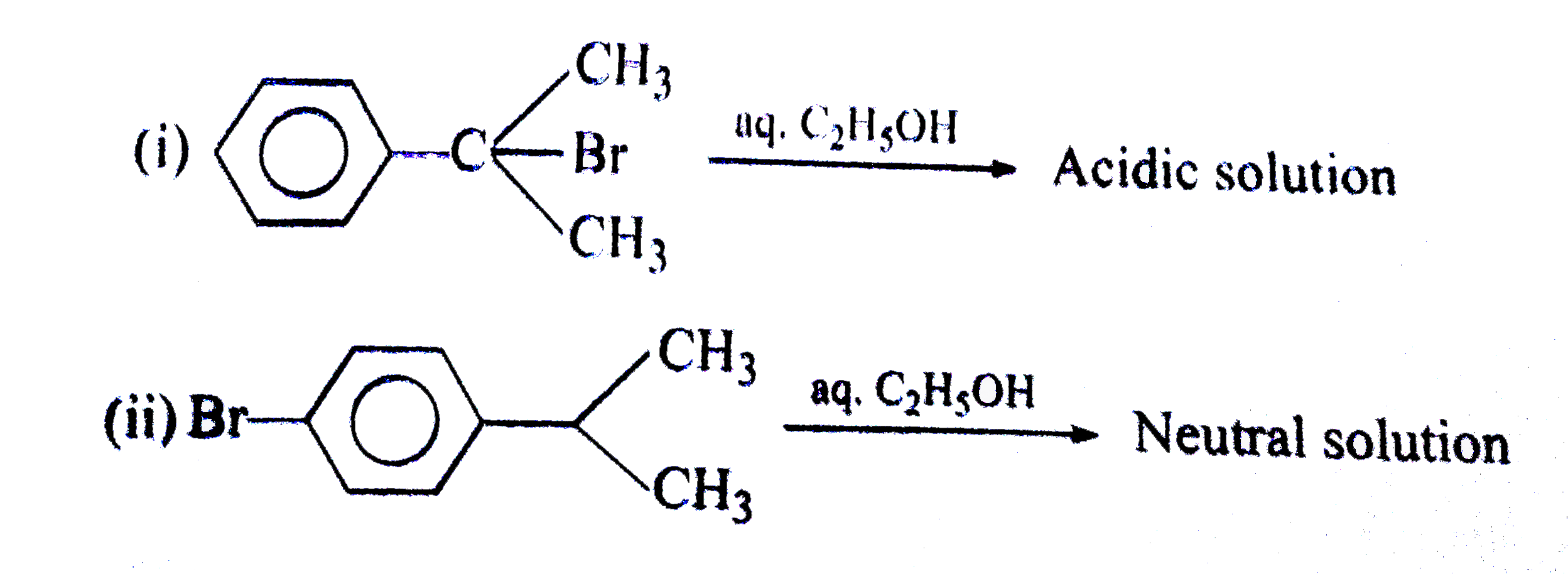 06:14View Solution
06:14View Solution(a) List the following species in order or decreasing nucleophilicity in aqueous medium.

(b) Indicate which of the following solvent is protic or aprotic . ,

(C) Identify the strongest nucleophile in each pair of anions.
(i) `Br^(Theta) " and " CI^(Theta) " in " H_(2)O (ii) .^(Theta)SH " and " F^(Theta) " in " CH_(3)OH`
`(iii) ,^(Theta)OH " and " CI^(Theta) " in " DMF`View SolutionRank the alkyl halides in order of increasing reactivity in `E_(2)` reaction .
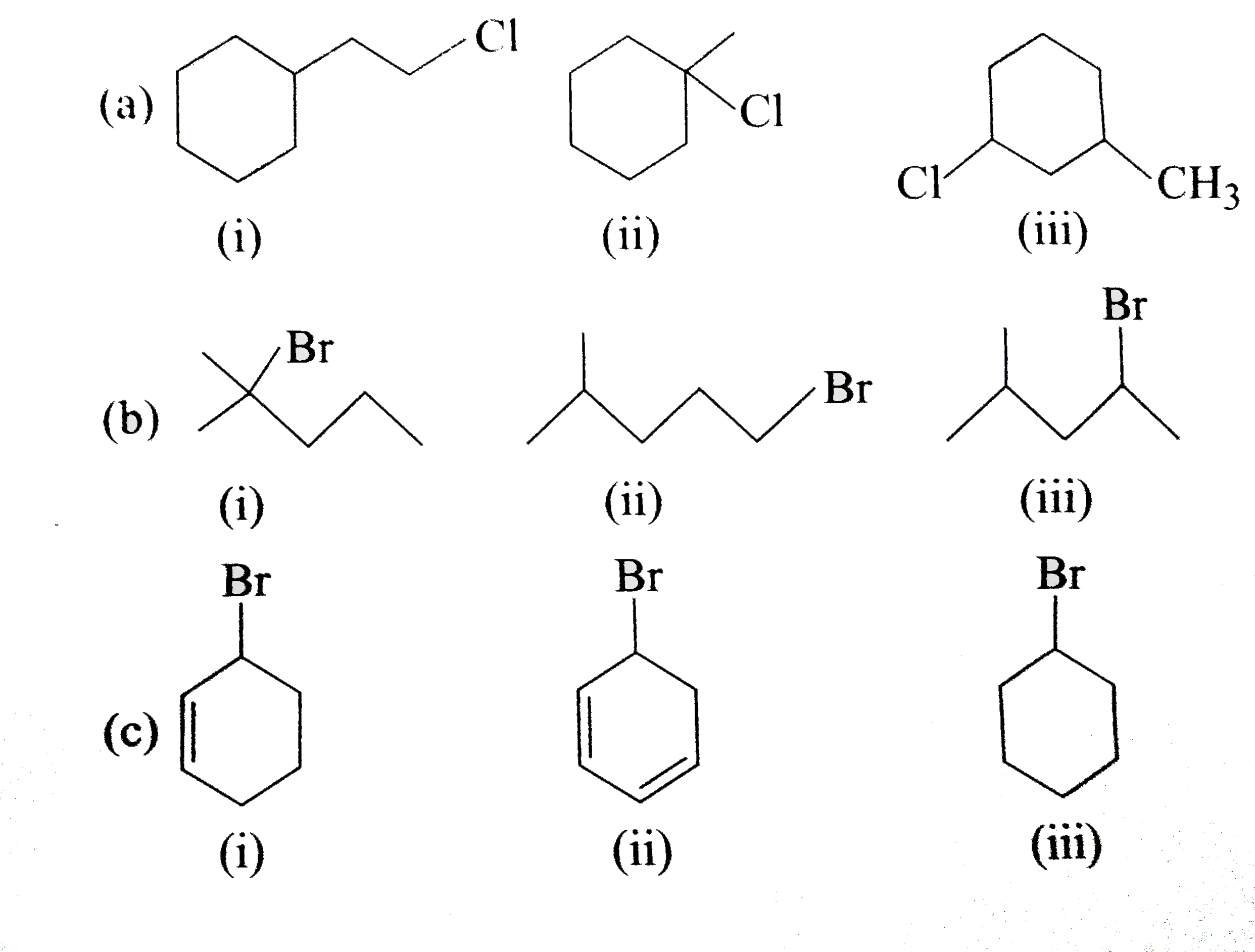 04:06View Solution
04:06View SolutionFind the major products of the following reactions :
 06:31View Solution
06:31View Solution
Problem For Practice questions and complete solutions for chapter HALOALKANES AND HALOARENES of G.R. BATHLA & SONS CHEMISTRY (HINGLISH) of Class 12
All Exercises from OP TANDON Class 12 CHEMISTRY HALOALKANES AND HALOARENES
- Assertion -Reason Type Questions
- Example
- illustrations of objective questions
- Linked comprehension type questions passage
- Matching type
- Matrix -Match Type Questions
- Objective Questions
- Objective Questions Lavel -B
- Objective Questions Lavel -B Set II This set contains the questions
- Problem
- Problem For Practice
- Problems based on structure and properties
- Single Interger answer type questions
